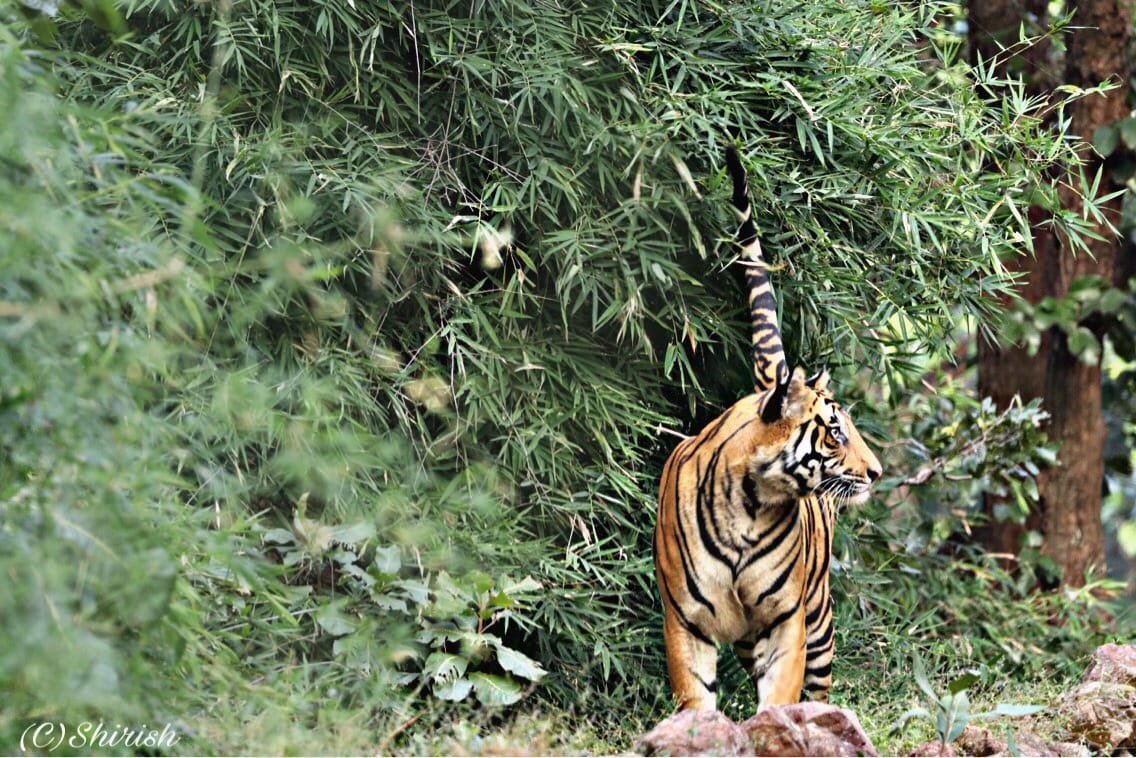This blog was triggered by a recent news of tiger traversing 1300kms in matter of weeks. As I reached my desk in office, a colleague of mine asked me “Is this really possible? Do we have so much jungle around us? Why don’t they (tigers) stay inside forest? These questions got me excited so much so that I thought of penning my thoughts on it.

So let me start from very basics of tiger behaviour. Tiger are solitary carnivores. Unlike lions or wild dogs they are not social. Tigers are highly territorial too. One male tiger will not share his territory with another male tiger. Not even father and son. Here it’s worth mentioning that a male will always have few females in his territory. Incase of tigress they are slightly more accomodating with daughters. But it is observed that ultimately the mother is thrown out of territory by younger females or daughters.
Tiger cubs are born blind. First 15 days they are dependent on mother. They are trained and fed by mother for 20 to 24months old. At 24 months they are on the mark to become independent. Been territorial now they look forward to establish own territory. The newly independent cub has two options for establishing territory- first kill/defeat the parent (father for male/mother for female) and take over territory. This is a difficult option since they lack experience, size and strength. They can’t right away fight it out with an adult male tiger. So they have to move out of jungle and go for second option.

The second option is moving out and search new territory for self. Nomadic style suits them well. This is why these long walks happen. With increasing tiger population, this phenomenon will become common. A tiger will not settle till it has a territory of it’s own. So what’s critical for tiger to settle down in territory? Simple – lot of Water, prey, tigress and some forest cover.
Here are few examples from recent past where tiger walked hundreds kilometres in matter of few weeks in search of territory
1. Tippeshwar in Yavatmal to Melghat landscape in Maharashtra (Buldhana) after exploring 1300kms. This is also longest ever documented movement.
2. Bandhavgarh in MP to Lalgarh in WB, distance of 900kms
3 Tadoba in MH to Satpura in MP, distance of 510kms
One important question still remains, do we have such tracts of jungles left? Well the answer is No. The reserves holding tigers are like dots on map of India. When a tiger moves out he crosses villages, road, rail routes, rivers, farms and human settlements. This is what at times leads to a tiger lifting cattle of villagers. This in turn leads unleashing of human urge to take revenge by killing tiger. The methods of revenge are sadistic like poising carcass of cattle or putting up electric fences. Fact is that when tiger reserves are like dots, man animal conflict is inevitable.
According to recent documentation of Government of India, we have only 21% of forest cover. Which is well short of healthy standard of 33% cover. We humans must understand that Tiger protects forest and forest protects tiger. So what it means for tiger conservation is that these dots need to be connected. These connecting lines are called “Tiger Corridor”. These corridors help animals move freely. As a example let us look at Satupra habitat and tiger corridors in this landscape:

Image source www.savingtigers.org
I would also like to mention that the corridors are required not just for tigers but for all the animals. Example- elephants. Corridors are critical because elephant’s habitat is now taken over by tea/coffee garden etc. Establishing corridors will help elephants not only to survive but also reduce number of human deaths in man-animal conflict with elephants. You might be surprised to know that in India more humans are killed by elephants than tigers.
Wild animals are called wild because they are born free to move freely, anywhere. They can’t be controlled, nor their movements. The presence of these corridors will ensure sustainable conservation of our natural heritage. It will be benefical not just for the animals but also for us as it will lead to reduce conflict with wild animals. It’s only when dots are connected by green patches of forest called corridors will the spirit of wild be really free.
